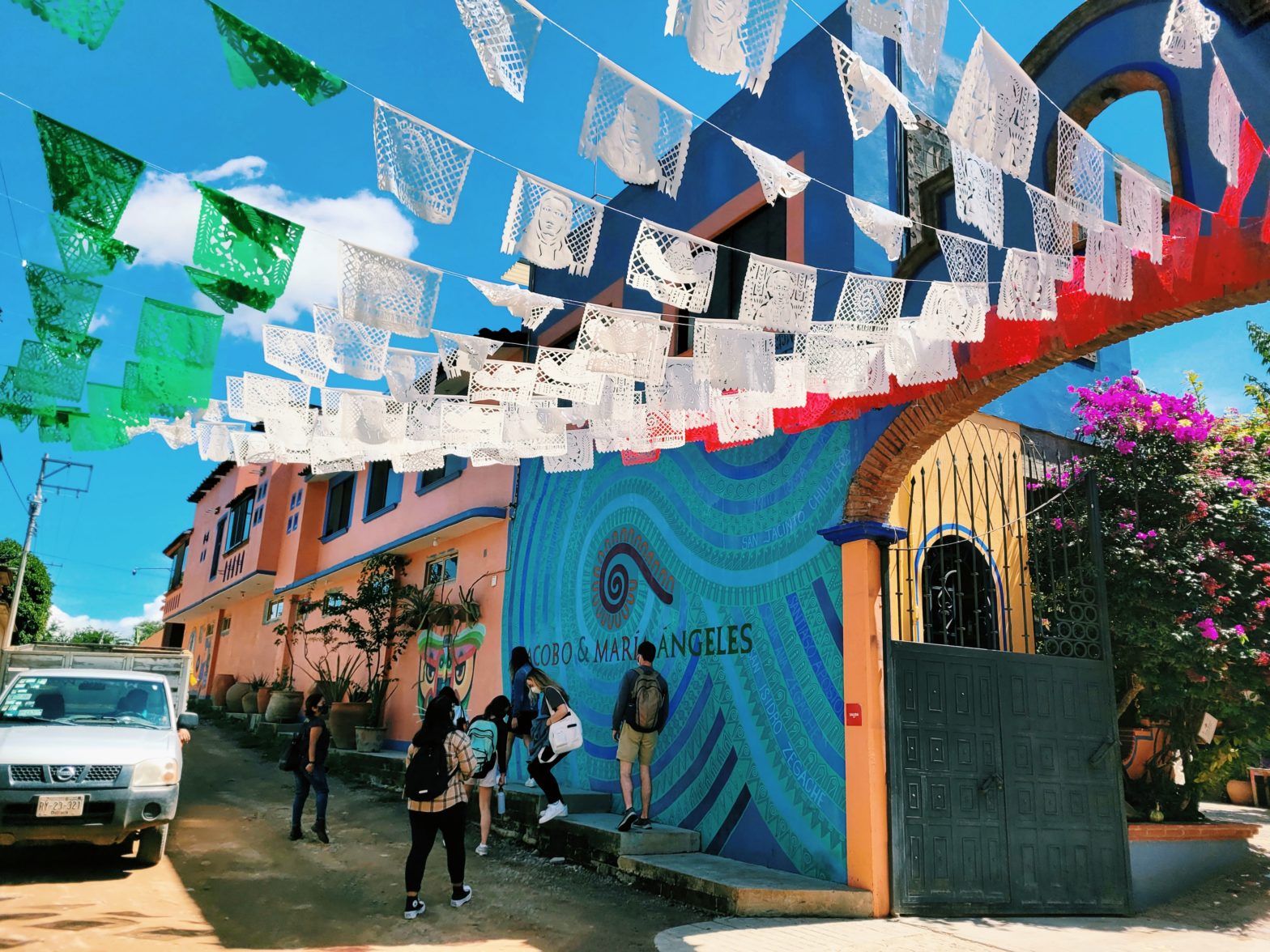Instantly my vision flooded with colors, from captivating reds to vibrant purples, and my nose filled with the scent of freshly carved wood. Just another day in the classroom. The copal trees provided some much-needed shade from the baking sun as we meandered through the workshop observing the artists in action. After all, it’s not every day you get to see how alebrijes are made.
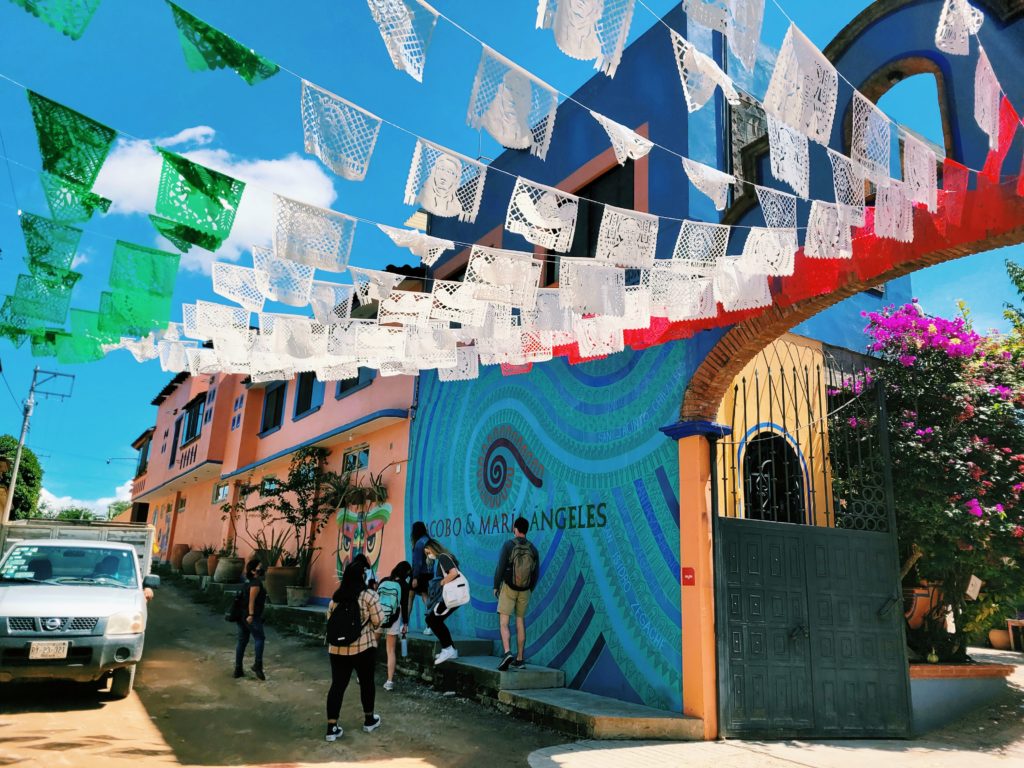
What is an alebrije?
Most people associate the term with the colorful and fantastical creatures that grace the screen in Disney’s Coco, but there is so much more to their story. Truthfully, alebrijes is an encompassing term for both tonas and nahuales that are an important part of the Zapotec culture. The tonas represent the animals of the Zapotec calendar, similar to Chinese astrology. Some examples include coyotes, armadillos, bulls, and owls. The nahuales refer to animals fused with the human spirit or the animals that humans transform into during the night. This is why if one looks closely at the style at Taller Jacobo & María Ángeles (where we visited) you can see the resemblance of human features in the figurines, such as braids.
Overall, these carved figurines function as and depict guardian spirits. Individuals can have their own, based on Zapotec astrology, as well ancestral guardians. Pepita, the mashup of a lion and an eagle that guides Miguel home in Coco is one example of these ancestral guardians while Dante, the dog, serves as a personal guide.
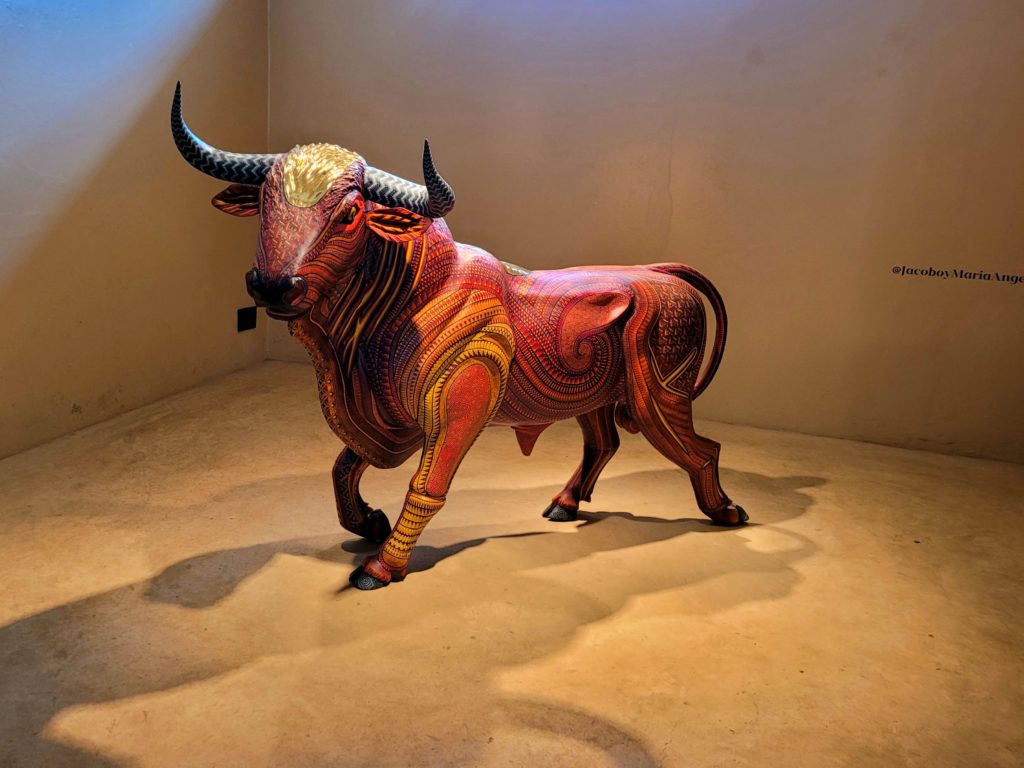
An alebrije of a toro in their gallery. 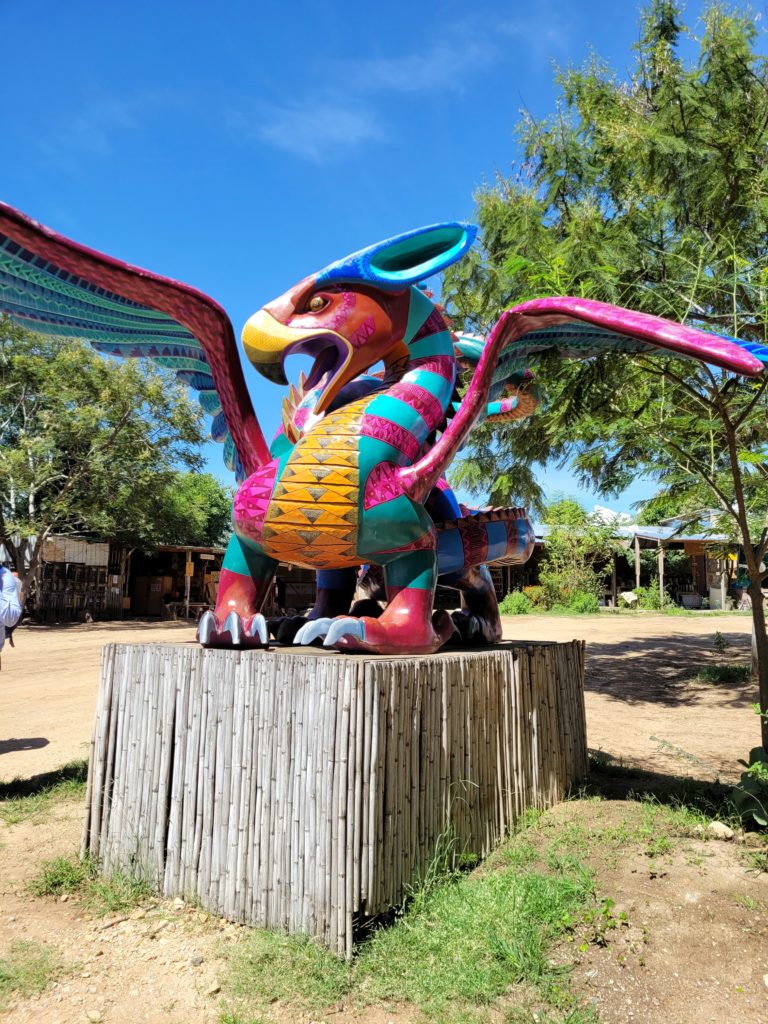
A large dragon alebrije in their outdoor studio/workshop.
Discovering the Hidden Nahual
Alebrijes were originally made of papier mâché in Mexico City by a man named Pedro Linares. However, in an effort to preserve artisan handicraft traditions in Oaxaca in the mid-twentieth century, artists chose to carve them from the wood of the copal tree and called them “alebrijes of Oaxaca.” The wood the artists receive is soft copal and each artist studies the piece to discover the hidden nahual inside. (The taller (workshop) we visited actually has a copal conservation project that has been operating for 10 years!!) Once the nahuales are discovered, the artists carve using traditional techniques and tools, such as machetes and chisels.
Depending on the size of the piece, this can take anywhere from a couple of weeks to several months. Following the carving process, the copal is left to completely dry (to avoid future deterioration) anywhere from weeks to months. Finally, the artists cover the wood with base paint before passing it onto the painters to bring the piece alive with iconic colors and patterns of Zapotec origin. The total process can take anywhere from a couple months to an entire year! The dedication and intentionality behind each piece is incredible.
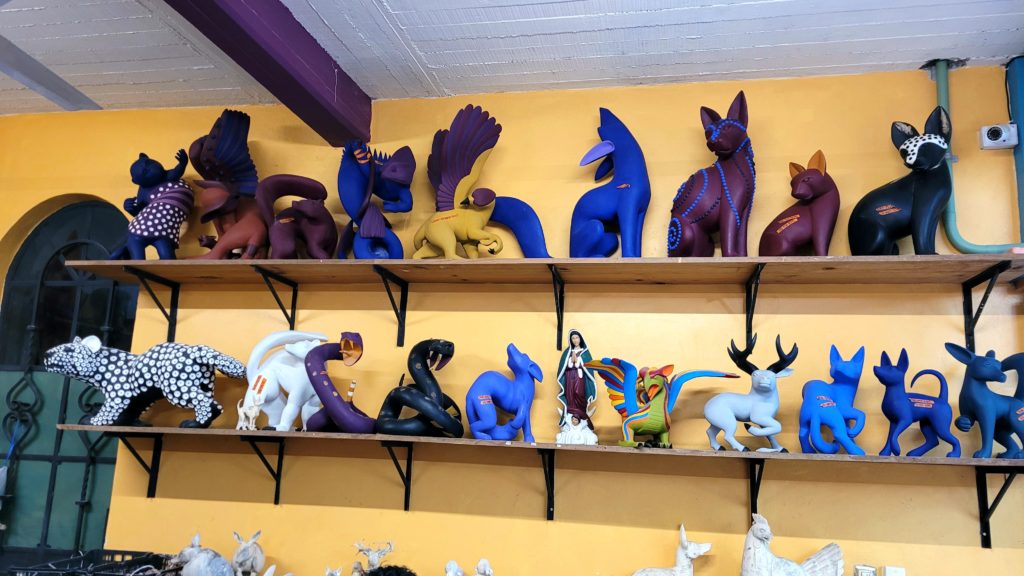
The alebrijes after being carved w/ their base paints.
Significance in Color
In order to preserve tradition, the artists use natural paints made from materials such as coal, seeds, indigo, or cochineal mixed with various minerals (zinc oxide and limestone) and a bit of lime juice. Our guide handmade several colors in front of us. Did you know that if you mix ground-up pomegranate arils with lime juice and a bit of zinc oxide you get a lovely teal color? Science in action.
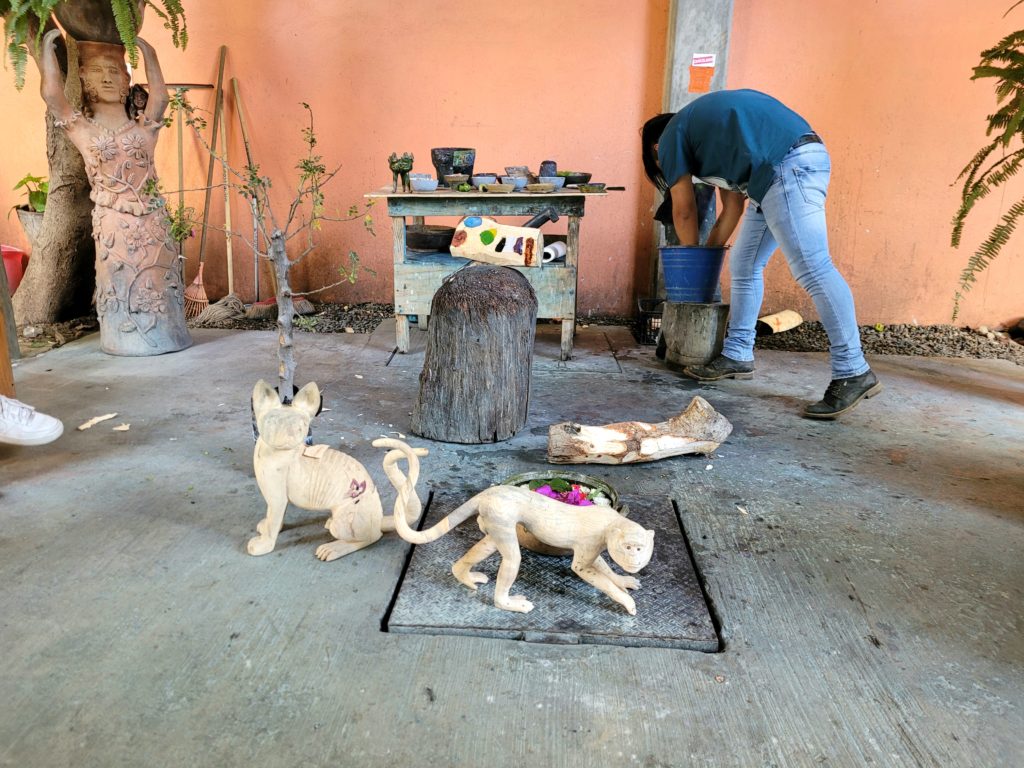
On top of this, many of the colors have significance of their own. Green often symbolizes empathy and nature, while red symbolizes love. Blue represents tranquility and brown portrays animals and connection to the earth. Orange relates to the liberation of negative emotions and yellow reflects our emotions, happiness, and light.
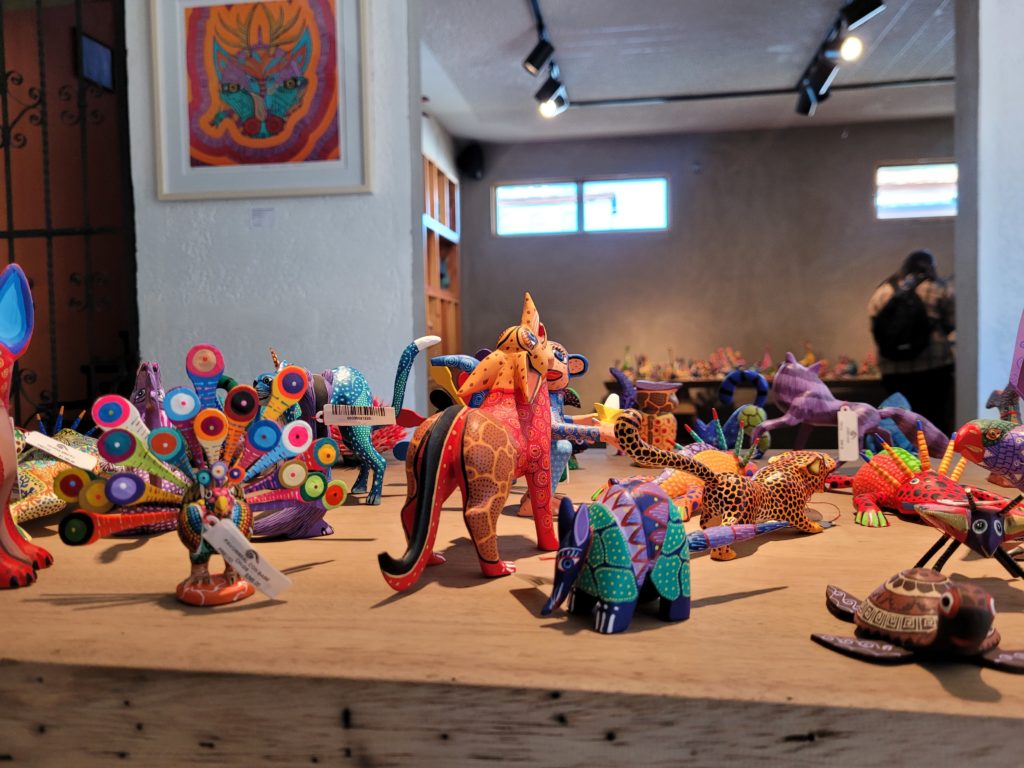
Every little detail, every color, every pattern intrinsically links to Zapotec culture and provides oaxaqueños with an immense amount of pride. I’m excited to see where my Spanish class takes me next!


